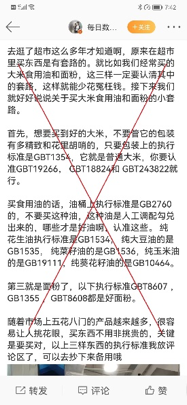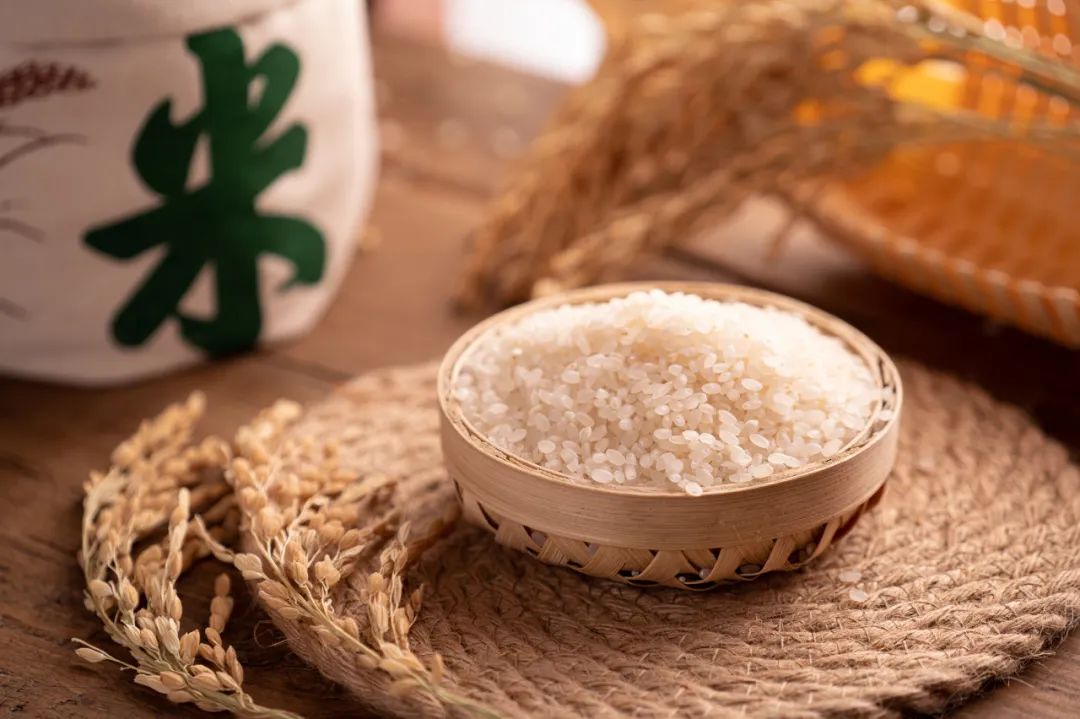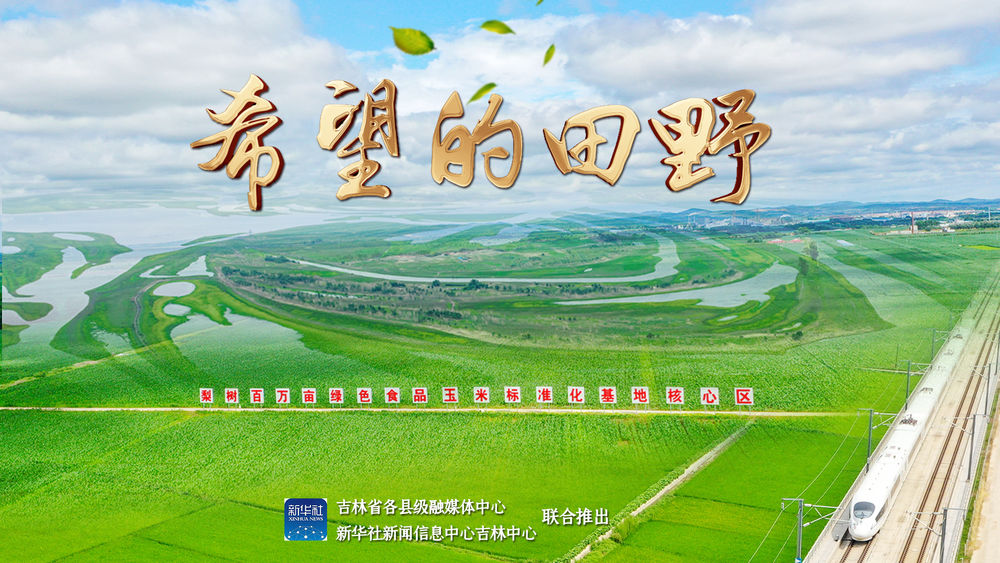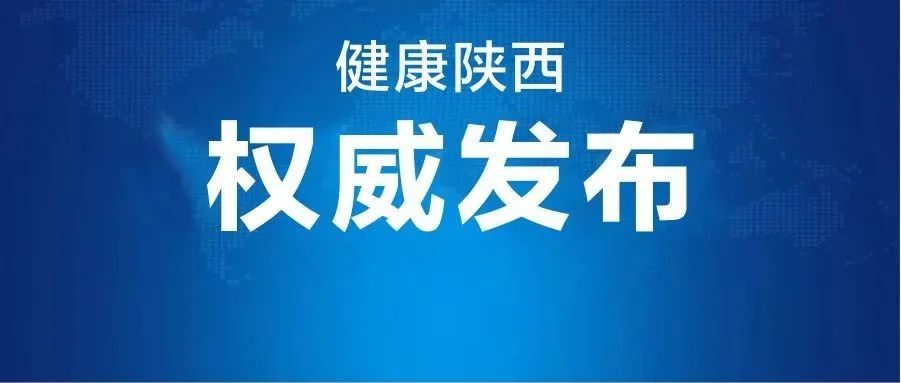"Following national standards to choose grain and oil", this tips suddenly burst into fire!The truth is ...
Author:Shell net Time:2022.09.27
Recently, a "rice edible oil and flour routine" appeared on the media platform, which has a huge spread, and the forwarding on a platform has reached tens of thousands of times.
According to the article, buying rice, edible oil, and flour depends on the execution standards on the packaging. For example, GBT1354 is just ordinary rice. Buy GBT19266, GBT18824 and GBT243822.

The basic idea in the article is to determine the advantages and disadvantages of the product based on the standards on the label. This "simple and easy -to -operate" life guidance is always easy to be welcomed. However, this content is completely aware of the misleading public.
Where is this article wrong? What should I think of "food standards"?
Too long, don't read the version
The product standard code is to help consumers understand the product more accurately, and cannot be used as a basis for the choice of product advantages and disadvantages.
"GB" is a national standard. It is compulsory, and whether the manufacturer is marked or not, it needs to meet its requirements.
GB/T 1354 is the standard of all rice, and there is no difference between ordinary and advanced.
Bad oil is not a "can't eat" oil.
GB/T 1355 is wheat flour, while GB/T 8607 and GB/T 8608 are the standards of segmentation products (high -gluten flour and low -gluten) in wheat flour. They refer to flour with different characteristics and suitable for different purposes, and do not mean quality.
Why is the "routine" text not reliable
The "rice edible oil and flour routine" on the media platform is wrong in the basic concept.
The food label requires the labeling of the product standard code to help consumers understand the product more accurately, and cannot be used as a basis for the choice of product advantages and disadvantages.
Let's take a look at its specific content and analyze it in detail.
The GB mentioned in the article is "national standard", and "GB/T" is a "national recommendation standard".

National Standard
1. About rice
GB/T 1354 (the "GBT" writing is wrong, GB/T is the standard writing) is the standard of all rice, and there is no difference between ordinary and advanced.
GB/T 19266 and GB/T 18824 are the "geographical indication protection products" standards of two specific origin. GB/T 243822 does not exist, probably the author's error.
For example, GB/T 1354 is aimed at "Chinese", and GB/T 19266 and GB/T 18824 are targeted at "people in a certain place". If you like these two places, of course, there is no problem, but you can't say that the people in these two places are "high -level people", and the Chinese people in the overall sense are not good enough "ordinary people."
2. About oil
"The execution standard on the oil barrel is GB 2760" is a very strange statement. In reality, there should be no edible oil that marked it as the execution standard. The GB 2760 is the standard for food additives. For all foods, it is mandatory. It is said that it is "allocated and blended". It is purely rumor.
There is a standard GB 2716 for all vegetable oils, which are targeted at all vegetable oils. Plant blending oil is blended with two or more oils, and GB 2716 can also be marked as product standards.
In addition, there is a recommendation standard for blended oil GB/T 40851.
The blending oil may be fooled in price and marketing publicity, but it is not an "unable to eat" oil in itself.

Barrowing oil is not an oil that cannot be eaten | Tuwa Creative
Several other recommended standards (all GB/T, not GB in the original blog) are targeted at different types of oil. For example, GB/T 1534 only guarantees that it is peanut oil (not other oil), and does not show its quality.
3. About flour
GB/T 1355 is wheat flour, while GB/T 8607 and GB/T 8608 are the standards of segmentation products (high -gluten flour and low -gluten) in wheat flour. They refer to flour with different characteristics and suitable for different purposes, and do not mean quality.
For example, 1355 target all "college students", while 8607 and 8608 refer to "XX professional college students".
All in all, many different standards in the online article are just "different classifications" and are not appropriate to judge the quality of products.
Talk about various "food standards"
According to my country's "Label Labels of Pre -Packaging Food", pre -packaged foods produced in China and sold in China must be printed with "product standard code". This pass is for mandatory national regulations, and any food must be observed.
"Product Standard Code" is the standard followed by food. Standard code consists of 3 parts: the number number of two or more letters, a number of numbers of 4 or 5 digits, and the age number of 4 digits.
For example, the standard code of the "Pre-packaging Food Tag" is GB 7718-2011, where the code "GB" indicates that this is a national mandatory standard. 7718 is the order number of this standard. Essence If this standard is updated and revised, GB 7718 is usually continued, and "2011" is replaced with the year of the new version. When the new version is implemented, the old version is invalid, so sometimes only the first two parts can be marked instead of the year, and the default is "the current valid version". There are many types of food production standards | Tuwa Creative

Food production standards (or "execution standards") refers to the basic specifications followed by the product and the basic quality requirements that the product needs. Based on the scope of the formulator and the binding force, the standard can be divided into different types. It is expressed in the codes.
National Standard: Also known as "National Mandatory Standards", expressed as "GB". Such a standard is the "most basic" requirement that needs to be implemented when producing this type of product. It is compulsory, and whether the manufacturer is marked or not, it needs to meet its requirements.
National recommendation standard: represented by "GB/T". It is a common implementation of the "recommendation" or "call" of regulators, but it is not mandatory, that is, manufacturers can choose whether to execute it by themselves. However, if the packaging is marked with it as the product standard, then all requirements need to be met; if it is not satisfied, it cannot be marked. If both GB/T and GB standards are available for the same product, the indicators in GB/T cannot be lower than the requirements in GB.
Industry standards: This type of standard is formulated and released by the relevant administrative department of the State Council when there is no national standard. When the standard products have corresponding national standards, the industry standards will be abolished. Industry standards are also divided into compulsory and recommended, and their meanings are the same as national standards and recommendation. The code of industry standards is distinguished from the competent department. For example, the mandatory standard coding of the Ministry of Light Industry is "QB" and the recommended standard is "QB/T"; /T "; the mandatory standard of the Ministry of Agriculture is" NY "and the recommended standard is" NY/T ". For example, QB/T 5284-2018 is a recommendation standards belonging to the industry and information (ministry of light industry after the reform of the ministry after the reform of the ministry), that is, "Frozen Food Terms and Category"; and NY/T 3168-2017 is the The industry recommendation standard of the Ministry of Agriculture "Good Agricultural Specifications for Tea".
NY/T 3168-2017 is the industry recommendation standard of the Ministry of Agriculture "Good Agricultural Specifications for Tea" | Tuwa Creative

Local standards: Local standards were formulated by local governments and started with "DB". In the past, the local standards were scattered and the code was not uniform. In 2019, the State Health and Health Commission issued a document to strengthen the management of local standards, requiring the codenamed local standards "DBS 'plus provinces, autonomous regions, and municipalities in the administrative region of the municipality. For example, DBS64/008-2022 is a standard local standard code. "DBS64/" means the local standard of Ningxia. 008 is the sequence number of this local standard "Wolfberry Plasma", and 2022 is the age of release. However, there are still some local standards that do not follow the requirements of this notice. For example, the local standard "Technical Regulations for Little yellow croaker breeding" in Zhejiang, the standard code is DB33/T 2496-2022, which does not use "DBS". Generally speaking, local governments are formulated in order to regulate production in their jurisdictions when there is no corresponding national standard. In this case, if there are national standards later, then national standards must be subject to national standards. If the local standards formulated under national standards, the indicators of local standards cannot be lower than national standards.
Group standards: Group standards are usually formulated by some industry associations or head enterprises in the industry. The code code is "T/XXX", of which XXX is the abbreviation of the publishing agency. The group standards are not compulsory and are not recommended by the competent authority. They are mainly a "agreed" or "commitment" of the main producers in the industry, and their content cannot be lower than the requirements in the corresponding national standards. In recent years, many industry associations, social groups, and business alliances like to formulate group standards, which is more of a marketing behavior. For example, the T/CNFIA 138-2021 released by the Food Industry Association is a standard for the "Soy Soy Milk" group, but restaurants selling soy milk on the market do not need to follow it.
Enterprise standards: Enterprise standards are the production standards for the formulation of enterprises and reviewed by the local competent authority. The code code is "Q/XXX". Among them, XXX should be composed of local administrative codes plus corporate name abbreviation, but in reality, there may not be standardized. There are two cases of corporate standards: one is that the product is relatively special, and there is no suitable ready -made standards to quote, so the enterprise formulates the standards; the other is that some indicators that the enterprise believes is too low. It is hoped that the enterprise will set the standard for the market. Make higher commitments. Regardless of the situation, corporate standards cannot conflict with any country, and at least one indicator must be higher than national standards.
Standard is not the basis for product pros and disadvantage
The label requires that the food label must be indicated on the product standard code. For manufacturers, the product standards mentioned above can be marked as execution standards. The product standard mentioned above can be marked as the execution standard | Tuwa Creative
For mandatory standards, whether it is marked or not, it needs to be satisfied; for other standards, manufacturers can choose — marked and need to be satisfied; without marking, don't pay attention.

It should be reminded that the standard "authority" and "indicator high" are two different things. If the same food has different standards that can be cited, the authority of national mandatory standards is the highest, but its indicator requirements are the lowest. In other standards, each indicator can only be the same or higher as national standards.
Those who really know how to obtain many products related to the code on the packaging. However, it must be remembered that the standard is "passing line", not the guarantee of "high quality". This is like the exam. You can pass 60 points, and 90 points can be passed -you can graduate after passing. As for whether a graduate is excellent, you need to consider it from other aspects, instead of just seeing "graduation."
Author: Yun Wuxin
Edit: Youzhi, Odette, Little Towel
- END -
Hope Tianye 丨 "Nongguang Travel Complement" helps rural revitalization -Jilin Dongfeng

JPEG Webkit-Playsinline The Nongguang Travel Complement Ecological Park, Dongfen...
The latest policy of entering and leaving Xi'an Railway Station!

There is only 1 mid -risk zone left in Xi'anFrom 16:00 on September 2ndXi'an 1 mid...